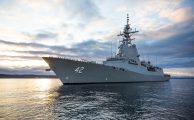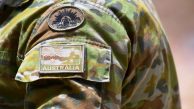
1942: Japanese Submarine I-25 and Its Glen Reconnaissance Aircraft
1942: Japanese Submarine I-25 – and its Glen reconnaissance aircraft over: Sydney, Hobart, Wellington, Auckland, Suva and Alaska
In mid-February 1942, a Japanese “mother’ submarine shelled Newcastle, and launched three mini-submarines into Sydney Harbour. On 17 February 1942, a Japanese “mother submarine” – I-25 (captain: Lieutenant Commander Akiji Tagami; 98 crew, 108 metres in length – three times the displacement of a German U-boat), launched a “collapsible” Yokosuka E14Y “Glen” float-plane that overflew parts of Sydney (La Perouse, Botany Bay, North Head – reportedly causing consternation in harbour-side suburbs. The unarmed Glen reconnaissance float-plane had a crew of two, and could be dismantled – broken-down into twelve pieces, and stored on the submarine in four water-tight “hangar “compartments forward of the submarine’s conning tower. Once assembled, it was launched from rails by a catapult or off-loaded by a derrick and took off from the sea-surface. Its mission was reconnaissance of enemy naval vessels – principally seeking warships of the US Navy.
From the Sydney area, the I-25 submarine sailed south into Bass Strait and anchored off Cape Wickham (King Island). On 26 February 1942, the Glen aircraft (pilot: Warrant Flying Officer Nobuo Fujita; observer/gunner Shoji Okuda, was launched and overflew Point Lonsdale, Geelong, Laverton and Melbourne (see the earlier item for detail on this three-hour flight over Victorian objectives). Leaving Bass Strait, the I-25 sailed on the surface down the east coast of Tasmania to Great Oyster Bay – the Bay is about 35 km long by 15 km wide and is protected by the red granite cliffs and steep headlands of the Freycinet Peninsula and Schouten Island. The Glen float-plane was placed onto the sea by I-25’s derrick – ie not launched from the submarine’s catapult. Flying up the Derwent River and overflying Hobart and the Mount Wellington area, some activity was noted – including five cargo ships but no warships. The Glen aircraft later did flights from the I-25 over Wellington (8 March 1942),
Auckland (13 March) and Suva (17 March) – before returning to its base at Kwajalein in the Marianas/Marshal Islands. In a subsequent mission by the I-25 on 9 September 1942, its Glen float-plane dropped two incendiary bombs into the forests of Oregon (US) in attempts to create forest fires. According to Wikipedia, this was the only time that the mainland United States was ever bombed by enemy aircraft – and the second continental territory to be bombed as such during wartime, ie after the bombing raid on Dutch Harbor in Unalaska (Alaska) by aircraft from two Japanese aircraft carriers on 3-4 June 1942.
The I-25 was subsequently sunk by US destroyers near Espiroto Santo (Vanuatu) in October 1943 – and all hands were lost.





The WWII flight of the Japanese Glen float-plane over Melbourne. On 26 February 1942, the two-man Glen aircraft was launched in Bass Strait from its I-25 mother-submarine and overflew Point Lonsdale, Geelong, Laverton and Melbourne. Anti-aircraft gunners at Williamstown spotted the Glen and were ready to fire, but the officer-in-charge delayed while he sought permission – and “the moment was lost.” The Glen aircraft flew along the Yarra at an altitude of 300 metres, past Port Melbourne and South Melbourne, and then down to St Kilda, Brighton, and Sandringham. RAAF Wirraway aircraft were reportedly “scambled” from Laverton, but lost the Glen in the cloud-cover. The Glen returned to its I-25 mother-submarine off Cape Wickham after its successful three-hour flight – and travelled along the Tasmanian coast to reconnoitre Hobart – before sailing off to Auckland and Wellington, then on to Suva … .